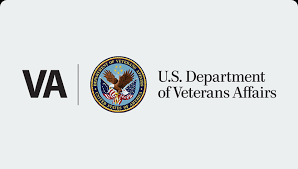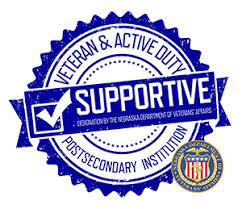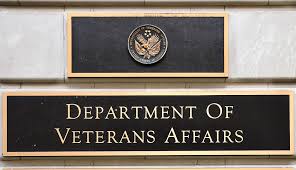Veterans Affairs Claims: Navigating the Process
As a veteran, you may be entitled to a range of benefits and services provided by the Department of Veterans Affairs (VA). These benefits are designed to provide support for veterans and their families in recognition of their service to our country. However, navigating the process of applying for these benefits can be a complicated and overwhelming experience.
The first step in filing a claim with the VA is to identify which benefit or service you are eligible for. This can include disability compensation, pension, education and training, healthcare, home loans, and more. Once you have identified the benefit or service that you need, you can begin the application process.
The VA provides several ways to file a claim. You can file online through eBenefits or submit a paper application by mail. You can also visit your local VA office and file in person with a representative. It’s important to note that each type of claim has its own set of requirements and documentation needed to complete the application process.
One of the most important aspects of filing a VA claim is ensuring that all required documentation is provided. This includes medical records, service records, and any other supporting documents related to your claim. Missing or incomplete documentation can result in delays or denials of your claim.
After submitting your application, it will go through an initial review process where it will be assigned to a claims examiner who will review all provided documentation. If additional information is needed or if there are any discrepancies in your records, you may be contacted by the examiner for further clarification.
The length of time it takes for your claim to be processed varies depending on several factors including the complexity of your case and current workload at the VA. The VA provides estimates on their website for how long each type of claim typically takes to process.
Once your claim has been reviewed and approved, you will receive notification from the VA outlining what benefits or services you are eligible for. If your claim is denied, you have the option to appeal the decision and provide additional evidence to support your claim.
Navigating the process of filing a VA claim can be a daunting task, but it’s important to remember that there are resources available to help you. The VA provides a range of services including assistance with claims, counseling, and healthcare. Additionally, there are many veteran service organizations that offer support and guidance throughout the process.
As a veteran, you have earned these benefits and services through your service to our country. Don’t hesitate to take advantage of them and seek out assistance when needed. The VA is here to support you in every step of your journey as a veteran.
Frequently Asked Questions About Veterans Affairs Claims: A Comprehensive Guide.
- What is the VA number for claims?
- What are the easiest things to claim for VA?
- What are the 8 steps to a VA claim?
- What are the most common VA claims?
What is the VA number for claims?
The VA number for claims is 1-800-827-1000. This is the toll-free number for the Department of Veterans Affairs (VA) Benefits Administration which handles all types of VA claims, including disability compensation, pension, education and training, healthcare, home loans, and more. Veterans can call this number to speak with a representative and get assistance with their claim or any questions they may have about their benefits.
What are the easiest things to claim for VA?
The easiest things to claim for VA benefits will vary depending on each individual’s circumstances and the type of benefits they are seeking. However, some of the more common and straightforward claims include:
- Service-connected disabilities: If you have a disability that is related to your military service, you may be eligible for disability compensation. This can include physical injuries, mental health conditions, and illnesses related to exposure to toxins or other hazards during service.
- Pension: If you are a low-income veteran or surviving spouse, you may be eligible for a tax-free pension through the VA. This benefit is based on financial need and does not require a service-connected disability.
- Education and training: The VA provides a range of education and training benefits for veterans, including the Post-9/11 GI Bill, which covers tuition and living expenses for college or vocational training.
- Health care: Veterans may be eligible for comprehensive medical care through the VA health care system. This includes preventative care, primary care, specialty care, and mental health services.
- Home loans: The VA offers home loan benefits that can help veterans purchase or refinance a home at favorable terms.
It’s important to note that while these claims may be relatively straightforward compared to others, each case is unique and requires careful consideration of individual circumstances. It’s always recommended to seek guidance from a qualified VA representative or veteran service organization when filing any type of claim with the VA.
What are the 8 steps to a VA claim?
The 8 steps to a VA claim are as follows:
- Determine eligibility: The first step is to determine if you are eligible for VA benefits. This can be done by reviewing the eligibility requirements on the VA website or by contacting your local VA office.
- Gather evidence: The next step is to gather all of the evidence needed to support your claim. This may include medical records, service records, and any other relevant documentation.
- Complete and submit application: Once you have gathered all of the necessary evidence, you can complete and submit your application for benefits.
- Initial review: Your application will go through an initial review process where it will be assigned to a claims examiner who will review all of the provided documentation.
- Request for additional information: If additional information is needed or if there are any discrepancies in your records, you may be contacted by the examiner for further clarification.
- Decision made: Once all of the necessary information has been collected and reviewed, a decision will be made regarding your claim.
- Notification of decision: You will receive notification from the VA outlining what benefits or services you are eligible for.
- Appeal: If your claim is denied, you have the option to appeal the decision and provide additional evidence to support your claim.
It’s important to note that each type of claim has its own set of requirements and documentation needed to complete the application process. Additionally, the length of time it takes for a claim to be processed varies depending on several factors including the complexity of your case and current workload at the VA.
What are the most common VA claims?
The Department of Veterans Affairs (VA) provides a wide range of benefits and services to veterans, but some claims are more common than others. Here are some of the most common VA claims:
- Disability Compensation: This benefit provides tax-free financial compensation to veterans who have a service-connected disability or injuries that occurred during military service. The amount of compensation is based on the severity of the disability.
- Pension: This benefit provides financial assistance to wartime veterans who have limited income and assets, and who are over the age of 65 or permanently disabled.
- Education and Training: The VA provides education and training benefits to help veterans pursue higher education, vocational training, apprenticeships, and on-the-job training.
- Healthcare: The VA provides healthcare services to eligible veterans, including preventative care, primary care, specialty care, mental health services, and more.
- Home Loans: The VA offers home loan benefits to eligible veterans that can be used to purchase or refinance a home at competitive interest rates.
- Vocational Rehabilitation and Employment (VR&E): This program helps veterans with service-connected disabilities prepare for, find, and keep suitable jobs.
- Life Insurance: The VA offers life insurance options for eligible veterans that can provide financial security for their families in the event of their death.
It’s important to note that each type of claim has its own set of requirements and documentation needed to complete the application process. If you’re a veteran seeking benefits from the VA, it’s recommended that you consult with a veteran service organization or an accredited attorney or agent who can help guide you through the process and ensure that your claim is submitted correctly.




